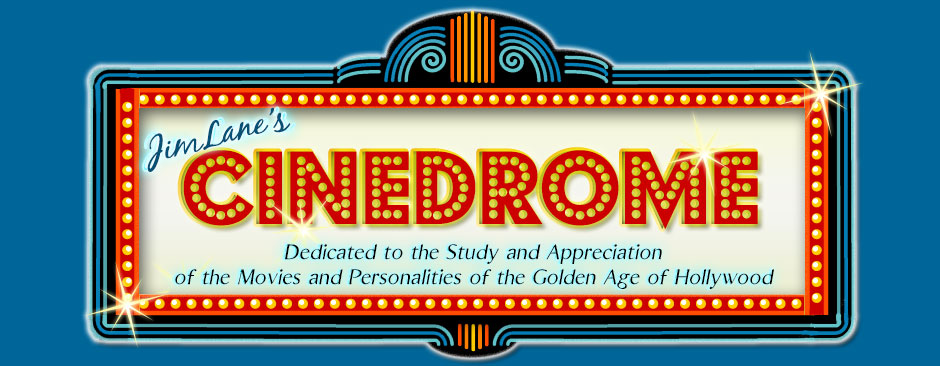Twinkle, Twinkle, Little ‘Star’
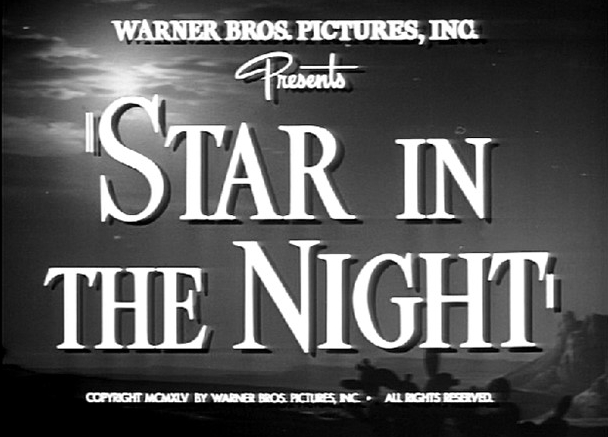 As we all decompress from the Holiday Season, I want to pause and pay tribute to a particular Christmas movie, one of the least known and one of the best. It distills the spirit of Christmas as well as — sometimes better than — more familiar titles, worthy as they are. Without being preachy or even overtly religious, it presents that spirit in the form of a parable — the form, in fact, favored by Jesus himself in the Gospels. And it’s only 22 minutes long.
As we all decompress from the Holiday Season, I want to pause and pay tribute to a particular Christmas movie, one of the least known and one of the best. It distills the spirit of Christmas as well as — sometimes better than — more familiar titles, worthy as they are. Without being preachy or even overtly religious, it presents that spirit in the form of a parable — the form, in fact, favored by Jesus himself in the Gospels. And it’s only 22 minutes long.
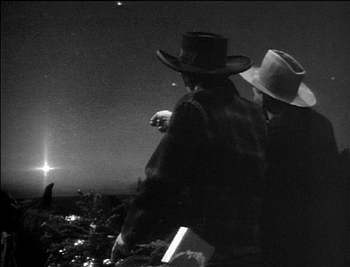 It’s called Star in the Night, released by Warner Bros. on October 13, 1945. It opens on a cold night (Christmas Eve, as we later learn) somewhere in the desert of the American Southwest — Arizona, perhaps, or Nevada or New Mexico. Three cowboys are ambling along on horseback. Their arms and saddles are laden with toys, Yuletide decorations and other “doodads” which, in a spasm of holiday cheer, they have bought from a general store in the town they left back a ways, though they haven’t the slightest idea what to do with them or whom they might give them to.
It’s called Star in the Night, released by Warner Bros. on October 13, 1945. It opens on a cold night (Christmas Eve, as we later learn) somewhere in the desert of the American Southwest — Arizona, perhaps, or Nevada or New Mexico. Three cowboys are ambling along on horseback. Their arms and saddles are laden with toys, Yuletide decorations and other “doodads” which, in a spasm of holiday cheer, they have bought from a general store in the town they left back a ways, though they haven’t the slightest idea what to do with them or whom they might give them to.
Suddenly, off in the distance, they see a star, incredibly bright and unnaturally low to the horizon, blinking on and off at random intervals. “Never did see a star as big and bright as that,” says one of them. “Let’s mosey over and see what it’s doin’ there.”
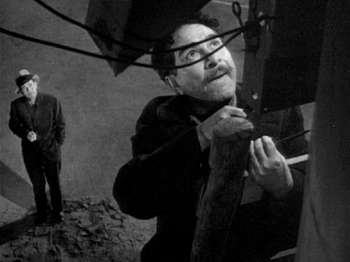
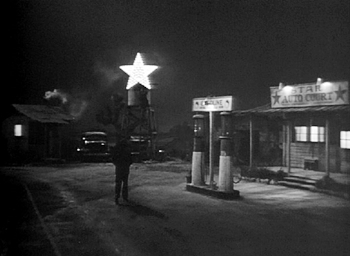 The camera takes us there long before the cowboys have time to arrive. It turns out the star the cowboys see is no astronomical phenomenon; it’s an advertising sign, illuminated by 102 light bulbs. Recently purchased from a defunct movie theater (“Star Picture Palace”), it’s been newly installed over a roadside inn, the Star Auto Court. As a lone vagabond approaches from the road, the Star’s proprietor, Nick Catapoli (J. Carroll Naish) struggles to keep the star lit, hoping its brilliant light will catch the eye of highway travelers for miles around.
The camera takes us there long before the cowboys have time to arrive. It turns out the star the cowboys see is no astronomical phenomenon; it’s an advertising sign, illuminated by 102 light bulbs. Recently purchased from a defunct movie theater (“Star Picture Palace”), it’s been newly installed over a roadside inn, the Star Auto Court. As a lone vagabond approaches from the road, the Star’s proprietor, Nick Catapoli (J. Carroll Naish) struggles to keep the star lit, hoping its brilliant light will catch the eye of highway travelers for miles around.
The nameless vagabond (Donald Woods) is a hitchhiker weary of trying to thumb a ride in the cold dead of night and hoping the Christmas Spirit will move Nick to let him come in from the cold for a while, maybe even have a hot cup of coffee. But Nick is unmoved by the season. “This no flop joint,” he says in his pronounced Italian-American accent, “I got no business for the free lunch.” He claims — indeed, boasts — that he hates Christmas. All year, he says, people are stingy and mean, then at Christmas they smile, put on the false face. “Not Nick, I’m-a no phony.” For Nick, Christmas is a time of deceit and hypocrisy, not peace, love and brotherhood. The hitchhiker tries to coax Nick out of his cynicism: “Nick, you know better than that. Why, the good in people will be lighting the world a thousand years from now, Nick. Ten thousand years from now.”
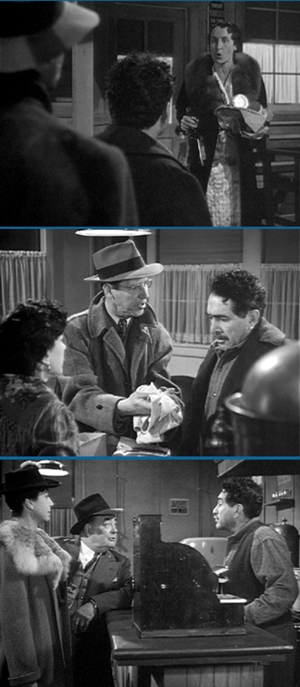
Not that Nick doesn’t have his reasons for taking a dim view of humanity. His guests at the Star Auto Court, from what we can see, are a pretty querulous and ill-tempered lot. There’s Miss Roberts (Virginia Sale), driven to distraction by a caroling party in the cabin next to hers. The carolers, never seen, provide a melodic accompaniment to the night’s goings-on, but Miss Roberts hears only an annoying racket — “I’m getting up at five in the morning and I’ve got to get some sleep, you understand?” Adding to her short temper is the detritus of the caroling party — bottles, fast-food sacks, paper cups, etc. — which she hurls at Nick’s feet with an angry, “See how you like it!”
Meanwhile, inside the motel’s combination office and cafe, Nick’s wife Rosa (Rosina Galli) is confronted by another guest/resident, Mr. Dilson (Irving Bacon). His bone of contention is the shirts that just came back from the laundry where Nick and Rosa sent them. Brand-new five-dollar shirts, each of them, he barks, none of them properly cleaned and pressed, and one of them torn at the collar. Rosa promises him the shirts will be sent back and redone, but Mr. Dilson is unmollified. “Maybe if you did business with a better laundry — oh, you might not get as much commission, but you’d have more satisfied customers!”
Then two travelers (Dick Elliott, Claire Du Brey) arrive to check into the Star Auto Court’s last remaining cabin. They show signs of being just as persnickety and hard to please as Nick and Rosa’s other clients. “Better make sure about the hot water, dear,” the wife says; “remember how you couldn’t shave at that place we stopped at?” And, “These places are never warm; we’ll want some extra blankets.” Nick tries to reassure her, she insists, he takes umbrage: “Look, Mrs., if everybody’s like you I’m gonna need a million blankets.” Ever the peacemaker, Rosa steps in, offering the couple her own blankets, “just come back from the laundry”, and she leads them out to escort them to their cabin. “You see,” the woman sniffs to her husband, “you have to insist on what you want in a place like this.”
With each confrontation, Nick turns a jaded, I-told-you-so eye to the wandering hitchhiker. “That’s-a peace, brotherhood, love. Shame on you for bein’ such a fool!”

Things begin to change with the arrival of Jose Santos and his wife Maria (Anthony Caruso, Lynn Baggett), who pull up in a rattletrap old Model-A Ford that looks about to break down. For that matter, so does Maria, weary, distressed and on the verge of some medical emergency. She and Jose need shelter for the night — but alas, there is no room at the inn. Once again, though, Rosa offers a solution.
From that point, before Nick’s astonished eyes, everyone — Miss Roberts, Mr. Dilson, the traveler and his imperious wife — forgets their petty concerns and complaints to pitch in and help the young couple. Finally, with the arrival of the three cowboys and all those gifts they don’t know what to do with, this splendid little parable is complete.
Star in the Night began as a play by Robert Finch (1909-59) entitled The Desert Shall Rejoice (“The wilderness and the solitary place shall be glad for them; and the desert shall rejoice, and blossom as the rose.” — Isaiah 35:1), published on June 1, 1940 by Samuel French Inc. It’s listed on Amazon as a play in one act. In 2018 the 188-year-old Samuel French Inc. was acquired by Concord Music as part of its Concord Theatricals branch; their Web page lists The Desert Shall Rejoice as a “full-length play” with a royalty of $90 per performance, rather more than one would expect for most one-act plays. Neither Amazon nor Concord offers a perusal script of The Desert Shall Rejoice, so I am unable to resolve this apparent discrepancy.
There was an early television production of The Desert Shall Rejoice as half of a Kraft Theatre episode on Christmas Eve 1947; the episode does not appear to have survived, nor does any information about its cast or crew. What has survived is a half-hour radio adaptation broadcast as an episode of Hallmark Playhouse (a forerunner of TV’s Hallmark Hall of Fame) on December 16, 1948. The program was hosted by novelist James Hilton and starred John Hodiak as Nick. Unlike J. Carroll Naish, Hodiak’s worthy talents did not extend to an Italian accent, and he didn’t even try, opting instead for an angry middle-American snarl. There are other striking differences between this rather ham-handed Desert and Star in the Night, so many that it would be nice to know which version is closer to Robert Finch’s original play. The movie’s credits read “Original Story by Robert Finch/Screen Play by Saul Elkins”, suggesting that Elkins (a veteran writer and director of shorts and producer of B-features at Warner Bros.) may have considerably shaped and altered Finch’s “original story”. In any case, the finished product is a well-polished gem.
Star in the Night marked the directorial debut of Don Siegel, after a hectic six years at Warner Bros. doing montages (Confessions of a Nazi Spy, The Roaring ’20s, Casablanca, Yankee Doodle Dandy, etc.) and second-unit direction, often uncredited (Sergeant York, Mission to Moscow, Northern Pursuit, To Have and Have Not). It was a busy apprenticeship, bristling with classics, and Siegel’s distinguished directorial career was off to an excellent start. In later years (he died in 1991), Siegel was known to dismiss Star in the Night as “overly sentimental” — understandable, perhaps, coming from a man whose later work included Dirty Harry, Escape from Alcatraz, and the original versions of Invasion of the Body Snatchers and The Beguiled. But there is a difference between honest sentiment and sentimentality, and Star in the Night never slides from one to the other. It’s certainly no more sentimental than The Shootist (1976), one of Siegel’s (and star John Wayne’s) best late-career features. And right off the bat, Siegel gave us one of his most assured pieces of direction.
He had plenty of help. Besides the vaunted Warner Bros. production facilities, he had an ace cinematographer in Robert Burks (later an Oscar nominee for Hitchcock’s Rear Window and a winner for To Catch a Thief). Not to mention a cast of veteran familiar faces who, today, have a combined total of 2,217 movie and TV credits on the IMDb — nearly a quarter of them for the ubiquitous Irving Bacon alone (if you’ve seen any hundred movies from the 1930s, ’40s and ’50s, there’s a good chance you’ve seen Irving Bacon at least 35 times). But all those expert editors, art directors and actors also had the support of Siegel’s unerring eye for composition (which can be seen in these frame captures) and his correct-to-the-exact-millimeter instinct for camera movement (you’ll have to see the movie itself for that).
 My late uncle remembered seeing Star in the Night as a 15-year-old and being deeply impressed. He wasn’t alone; at the Academy Awards Ceremony in Grauman’s Chinese Theatre on March 7, 1946, Star‘s producer Gordon Hollingshead took home the Oscar for the best two-reel short subject of 1945. After that, Star in the Night simply dropped off the face of the earth and was as utterly forgotten as any film of the sound era has ever been. Myself, I had never heard of it before I stumbled across a 16mm print up for auction on eBay in 2008. The listing piqued my interest, and a follow-up check of the IMDb was an eye-opener: J. Carroll Naish?? Irving Bacon?? Dick Elliott?? Richard Erdman?? Don Siegel??? Academy Award?!? Why don’t I know about this??!??
My late uncle remembered seeing Star in the Night as a 15-year-old and being deeply impressed. He wasn’t alone; at the Academy Awards Ceremony in Grauman’s Chinese Theatre on March 7, 1946, Star‘s producer Gordon Hollingshead took home the Oscar for the best two-reel short subject of 1945. After that, Star in the Night simply dropped off the face of the earth and was as utterly forgotten as any film of the sound era has ever been. Myself, I had never heard of it before I stumbled across a 16mm print up for auction on eBay in 2008. The listing piqued my interest, and a follow-up check of the IMDb was an eye-opener: J. Carroll Naish?? Irving Bacon?? Dick Elliott?? Richard Erdman?? Don Siegel??? Academy Award?!? Why don’t I know about this??!??
I snagged that print, and it became a permanent part of the program at our annual Holiday Season screenings of The Polar Express (2004) for friends and family. One year, after I’d screened it eight or ten years running, as we broke for cookies and hot chocolate before the main feature, my brother gestured toward Star in the Night and said, “That never gets old.”
Indeed it doesn’t. It’s not only one of the best of all Christmas movies, it’s one of the best short subjects — period — ever to come out of Hollywood, in an era when even Poverty Row studios were turning out dozens of shorts (or serial chapters) a year. And fortunately (hooray!), it’s not nearly as unknown as it used to be, thanks to seasonal showings as a December “extra” on Turner Classic Movies. Thanks also to the fact that it’s a supplement on the DVD of Warners’ Christmas in Connecticut (also 1945). That Barbara Stanwyck/Dennis Morgan picture is an entertaining holiday romcom, but Star in the Night alone is worth the price of the disc. Do yourself a favor and pick it up; it’ll come in handy any time you want a quick 22-minute Christmas Spirit fix but don’t have time to watch a whole feature.
